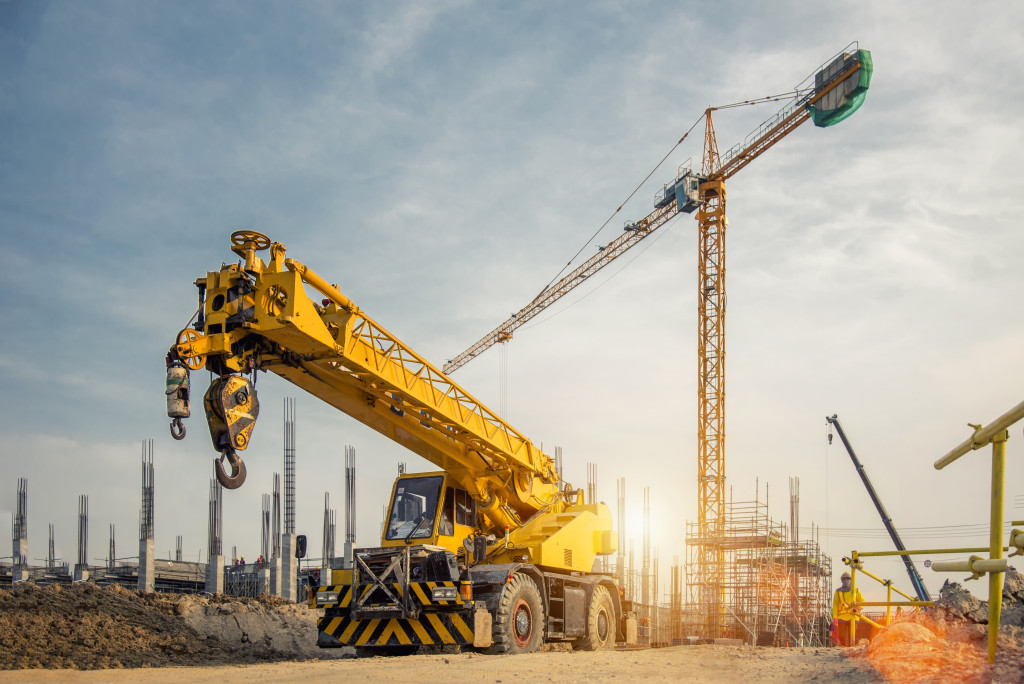- Regular training programs can enhance workers’ competency in equipment handling and hazard avoidance.
- Implementation of safety policies and guidelines ensures standardized safety practices on the construction site.
- Investing in durable fall protection systems significantly reduces the risk of severe injuries from falls.
- Mitigating risks and hazards proactively can prevent potential issues and ensure real-time safety monitoring.
Construction sites are naturally hazardous areas, and safety measures need to be in place to avoid accidents and mishaps. As a new leader in the construction industry, it is essential to develop a strong safety management plan to ensure the safety of your construction workers and the success of your business. Here are some tips to help you manage safety hazards in your construction site and avoid costly accidents.
Regular Training Programs:
Regular training for your employees will increase their competency levels when it comes to operating equipment, handling materials safely, and avoiding hazards effectively. Thoroughly train each employee for the specific task they will be performing on the site. Here are some other examples:
Proper Use of Machinery and Equipment
It is essential to train your employees on the proper use of machinery and equipment in order to prevent accidents or malfunctions. Make sure that they are familiar with all safety protocols, such as turning off the machine when not in operation, checking for loose parts, and always wearing protective gear.
Fire and Electrical Safety Protocols
In addition to proper machine and equipment usage, employees should be trained in fire and electrical safety protocols. Fire and electrical hazards are some of the most common causes of accidents at construction sites. Educate your team on emergency procedures, such as extinguishing fires quickly and appropriately, using a portable fire extinguisher if needed, and avoiding open flames or high-voltage areas.
Health and Safety Regulations
Being aware of the health and safety regulations on site is essential to ensuring a safe work environment for your team. Make sure that your employees understand the correct protocols, such as avoiding hazardous areas and knowing the evacuation plan in case of emergency.

Implement Safety Policies and Guidelines:
Develop safety policies and guidelines that must be followed in your construction site. Communicate these policies effectively to your team so they know what is expected of them regarding safety. Repeat regularly and follow up on all changes and adherence. Here are some standard aspects to prioritize:
Conduct Regular Safety Inspections:
You must conduct regular safety checks to ensure that your construction site is up to par when it comes to safety. All equipment and machinery must be in good working condition to ensure maximum safety.
Check for worn-out wires, damaged tools, and faulty equipment that can pose hazards to your workers. Conduct these inspections regularly, and ensure workers know what to look out for dangers.
Use Proper Personal Protective Equipment:
Personal protective equipment (PPE) should be used in every construction site to prevent injuries that may occur. Ensure that your construction workers are geared with helmets, gloves, goggles, safety boots, face masks, and safety belts. Make PPE accessible and visible throughout the site to encourage safe behavior.
Invest in Fall Protection Systems
Falls are a significant risk in the construction industry and can result in severe injury or death. To ensure the safety of your workers, invest in durable fall protection systems that meet national standards for safety. This includes guardrails, personal protective equipment like harnesses, lifelines, and shock absorbers to help prevent falls from high surfaces.

Mitigate Risks and Hazards:
Finally, minimize risks and hazards by mitigating potential issues as you monitor your construction site in real-time. Analyze your construction workflow and be mindful of possible dangers that may arise.
To ensure preparedness for any emergencies, it is highly recommended to seek guidance and advice from industry experts. Their valuable insights and knowledge can provide a solid foundation for handling unexpected situations effectively.
Consider installing barriers to prevent workers from accessing dangerous areas such as trenches, hot zones, or places where they may be exposed to hazardous materials.
Safety in construction sites is critical in ensuring that projects are completed successfully without any harm to the workers or the general public. As a new leader in the field, it’s crucial for you to prioritize safety more so than your project’s timelines or budget. The above tips can help you develop a robust safety management plan that ensures the security of your workers and project success while avoiding costly accidents that may take longer to recover from in the long run. When your workers feel safe, they are more likely to be motivated, productive, and committed to the business.

